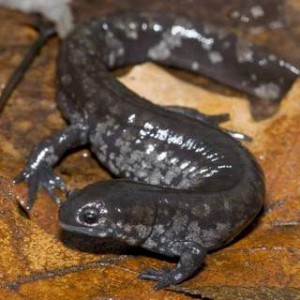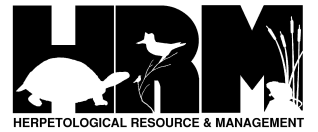Small-mouthed Salamander
Overview:
Scientific Name: Ambystoma texanum
Size: 4.3 – 7” (adult length)
Status: Rare and declining throughout range.
Michigan State Status: Endangered;
MDNR Wildlife Action Plan Status: Species of Greatest Conservation Need

Habitat:
Prefer lowland floodplain woodlands, but also occur in areas with fragmented or degraded forest cover or in open areas such as prairie and agricultural lands. Habitat must contain shallow waters for breeding, such as vernal pools.
Adult Coloration:
Back varies from light gray to brownish gray or black with irregular pattern of gray or white blotches and flecks on top of body. This pattern is most dense on the sides and extends onto the dark belly. May appear paler in breeding ponds.
Adult Characteristics:
14-16 costal grooves (grooves between rib-like ridges that run down the sides of the body). Males are slightly smaller than females and have longer, more flattened tails. During breeding males have swollen vents.
Juvenile Characteristics:
Young larvae may be dark brown or olive green with light bars on the back. Older larvae may still have these bars and may exhibit a light stripe down each side of the back. These markings become obscured by darker pigment as the larvae near metamorphosis.
Species Confused With:
Blue-spotted Salamanders have longer snouts and blue markings on the sides. Marbled Salamanders have a conspicuous pattern of white bands on a black background.Dark phase of Red-backed Salamander has a groove running from the nostril to the lip.
References:
- Amphibians and Reptiles of the Great Lakes Region by Jim Harding
- Harding, J.H. and J.A. Holman. 1992. Michigan Frogs, Toads, and Salamanders. MSU Cooperative Extension Service and MSU Museum. Extension Bull. E-2350, 144 pp.
- Ruthven, A. G., H. B. T. Gaige, et al. 1912. The herpetology of Michigan, by Alexander B. Ruthven. Crystal Thompson and Helen Thompson; Memoranda towards a bibliography of the archaeology of Michigan, by Harlan I. Smith; prepared under the direction of Alexander G. Ruthven. Lansing, Mich., Wynkoop Hallenbeck Crawford, State Printers.
- Holman, J. A. 2012. The Amphibians and Reptiles of Michigan: A Quaternary and Recent Faunal Adventure. Detroit, Mich., Wayne State University Press.
- Conant, R., and Collins, J. T. 1998. Reptiles and Amphibians: Eastern, Central North America. Houghton Mifflin Harcourt Press.
